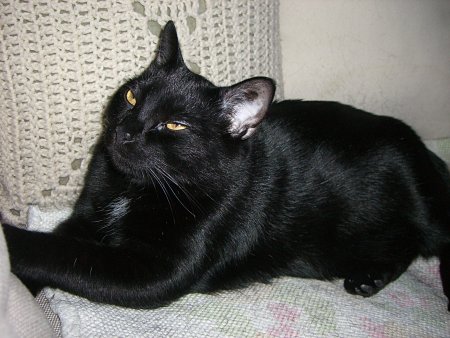This is a collection of funny student answers from my first few years of teaching introductory chemistry classes at my college. All student answers are presented as the student submitted them to me – spelling and all. Enjoy!
It helps to know what science you’re in
Question: Briefly define chemistry.
Student answer: A systemic substanse study of matter.
Conservation of mass: When you do a chemical reaction, the total amount of mass remains constant.
Question: Briefly state the law of conservation of mass.
Student answers:
- Mass is equal to volume. You mass something when in something. The weight how much holds or is.
- Mass measurements can be precise or accurate. Precise ask how close are measurements to the same measurement and accuracy wants to know is it right, law wants to know can I do it again.
- Mass is how much it takes up on an object.
- Mass is the kilograms.
Fun with Marshmallow Peeps!
Picture a marshmallow peep floating in a beaker of water. This was sitting in front of the students when they answered the following question.
Question: Is the marshmallow peep more or less dense than water?
Student answer: No.
Fun with magnesium!
Magnesium metal burns in air with a brilliant (almost blinding) white flame and leaves a white ash behind.
Question: Describe as thoroughly as you can what happens when a piece of magnesium is burned in air.
Student answers:
- When a piece of magnesium burn in the air it will not show a reaction b/c the air has less density and it will not burn throughly.
- It would explore like firecrackers.
- When a piece of magnesium burns, it gets hard and turns into a metal.
Fun with oxygen!
Students prepare molecular oxygen (O2) and investigate the effects of a pure oxygen environment on combustion. They observe that things burn more intensely in pure oxygen.
Question: How does the amount of oxygen present affect the rate of combustion?
Student answers:
- In high oxygen things give off better reaction and combustion. Compared to low concentration of oxygen.
- In high concentration of oxygen is faster than air.
- Oxygen burns faster and in air it doesn’t burn.
- The fire is more contense in oxygen. The oxygen speeds it up (fire, the burning).
Sulfur burns a with bright blue flame in a high concentration of oxygen and with a dimmer blue flame in air. The faster sulfur burns, the brighter the flame is.
Question: What evidence from the burning of sulfur confirmed your conclusion about the rate of combustion?
Student answers:
- That the sulfur when heat was added to it. It just started crackling and burning and looked like kinda like a copper color.
- It change from a powder form to a liquid form.
- It turned dark and there was a liquid.
- An environment with pure oxygen can reignite flame from embers, but low concentration can not. High oxygen content created more intense heat.
Fun with hydrogen!
Students prepare, collect, and burn hydrogen. Hydrogen burns rapidly with a loud popping sound.
Students collected hydrogen by bubbling it through a bottle of water. This works because hydrogen does not mix well with water (it’s “insoluble”) and is able to push the water out of the bottle.
Question: What physical property of hydrogen, other than it is less dense than water, allows it to be collected in this manner?
Student answers:
- Oxygen.
- Very reactive.
- Because it’s lighter than air.
- Its ability to mix with other gases “diffusion”
- It’s a molecule found in air.
- It is an element, reactive, and can burn and also a gas at room temperature.
You don’t get a “pop” from hydrogen combustion when you bring a burning splint over a bottle which has sat open for a full minute. The hydrogen is very light and escapes into the room.
Question: How do you account for this?
Student answers:
- Because hydrogen is dense.
- B/C it was left open for 1 minute + the hydrogen left out. Was oxygen.
- Air and hydrogen in the bottle did not make a popping noise.
- The hydrogen was at the top of the bottom.
- Oxygen put out the flame.
![[Cate and Rick]](http://whenchemistsattack.com/blogfiles/rick_and_cate.jpg)
![[Cate, Patty, and Patty's dad]](http://whenchemistsattack.com/blogfiles/patty_grandpa_cate.jpg)
![[Cate and her grandpas]](http://whenchemistsattack.com/blogfiles/grandpas_and_cate.jpg)
![[Three generations]](http://whenchemistsattack.com/blogfiles/cate_patty_pattysmom.jpg)
![[Catherine with Rick's mom]](http://whenchemistsattack.com/blogfiles/cate_ricksmom.jpg)

![[Newbord Catherine Ella]](http://whenchemistsattack.com/blogfiles/cate_newborn_1.jpg)
![[Vending machine]](http://whenchemistsattack.com/blogfiles/degreevending.jpg)
![[What? I don't understand. (From Star Ocean: The Second Story for the PSX by Tri-Ace/Enix)]](http://whenchemistsattack.com/blogfiles/so2_idontunderstand_tiny.jpg)
![[Element 118]](http://whenchemistsattack.com/blogfiles/element118.png)

![[Sign]](http://whenchemistsattack.com/blogfiles/oe_sign.jpg)
![[Tables]](http://whenchemistsattack.com/blogfiles/oe_tables.jpg)
![[We need another gyro!]](http://whenchemistsattack.com/blogfiles/oe_gyro.jpg)
![[Old Europe]](http://whenchemistsattack.com/blogfiles/oe_damascusbread.jpg)
![[image of a ruler and a line]](http://whenchemistsattack.com/blogfiles/readaruler.png)